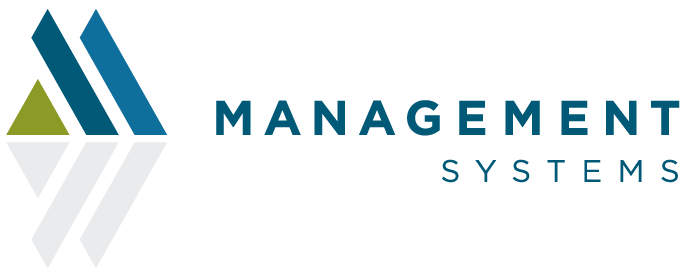Organizational Structure
At Management Systems, we have a unique approach to organizational structure that focuses on three distinct, yet related levels:
- Macro Structure – the boxes on an organization chart and how they are arranged.
- Micro Structure – how the roles and responsibilities of each position-holder are defined and how these “role descriptions” are managed.
- Supporting Systems – the systems (i.e., operational systems, management systems, and corporate culture management systems) that are in place to promote the effective implementation of the organization’s structure.
We have developed a set of eight criteria that can be used to assess the effectiveness of the current and design the future organizational structure. These eight criteria are:
- Strategy/Structure Alignment – the extent to which the current (or how the proposed future) structure supports the achievement of the organization’s goals.
- Functional Contribution – the extent to which each function in the current structure has a well-defined function that adds value (or the value-added role that each function will play in the proposed future structure).
- Clarity and Contribution of Individual Roles – the extent to which each individual role is clearly defined and contributes to the achievement of company Goals (or how each role should be defined to promote effective and efficient achievement of company Goals).
- Clarity and Structure of Reporting Relationships – the extent to which reporting relationships and decision making are clear and well-structured (or how reporting relationships should be structured to support the achievement of company Goals).
- Appropriate Span of Control and Number of Organizational Levels – the extent to which span of control and the number of levels supports effective and efficient achievement of Goals (or what the optimum number of levels and span of control should be in the proposed future structure).
- Appropriate Management/Leadership and Technical Skills – the extent to which managers/leaders and technical professionals have the skills needed to effectively fulfill their responsibilities (or the skills that managers/leaders and technical professionals will need to effectively fulfill their roles as defined in the proposed future structure).
- Effective Coordination – the extent to which units and individuals effectively coordinate in the current structure (or the systems that need to be in place to promote effective coordination/communication between units and individuals in the proposed structure).
- Appropriate Supporting Systems – the extent to which operational, management, and culture management systems support the effective functioning of the current structure (or the systems that will be needed to support the effective functioning of the proposed future structure).
The Management Systems framework for understanding and managing organizational structure is further explained in several of our books and articles (see Publications) including Eric Flamholtz’s and Yvonne Randle’s, Growing Pains and Changing the Game.
